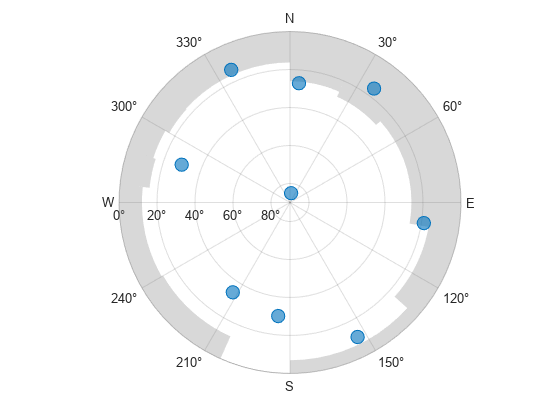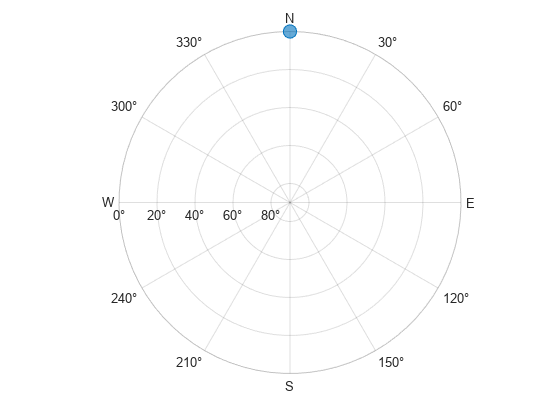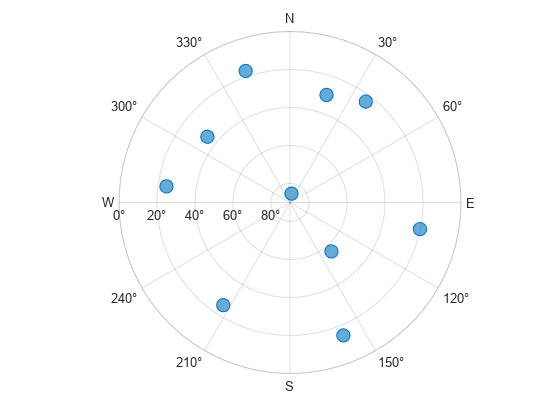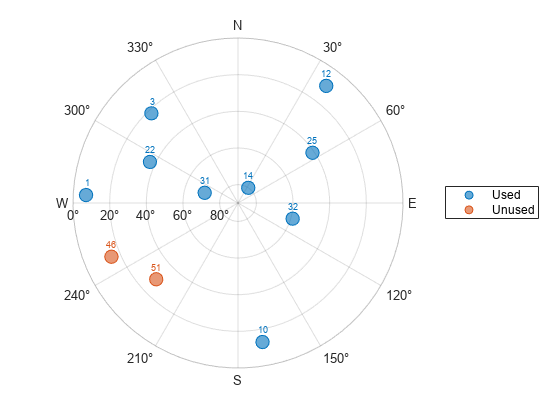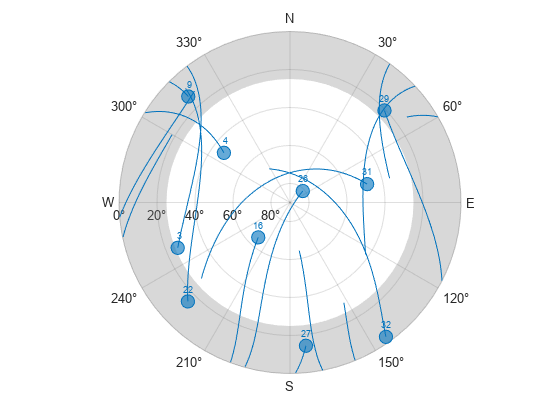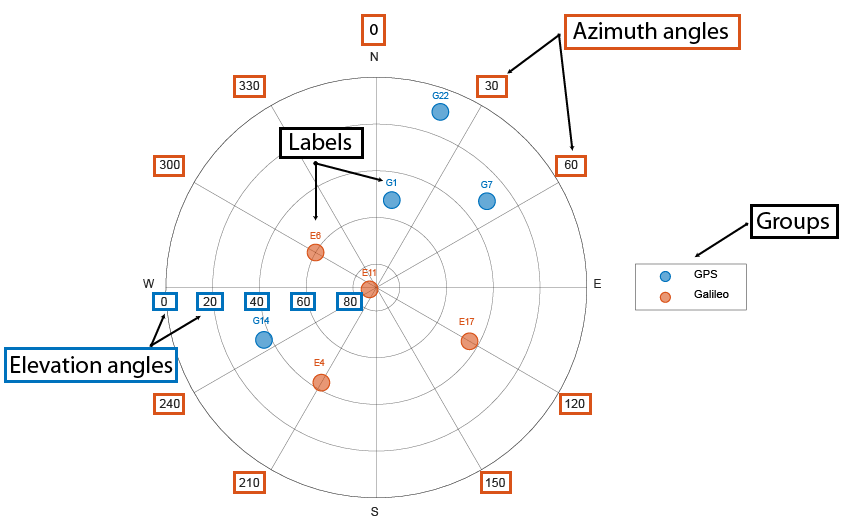skyplot
Syntax
Description
skyplot(
creates a sky plot using the azimuth and elevation data specified as matrices in degrees.
Azimuth angles are measured in degrees, clockwise-positive from the North direction.
Elevation angles are measured from the horizon line with 90 degrees being directly up. For
details about the sky plot figure elements, see Main Sky Plot Elements.azdata,eldata)
skyplot( specifies the azimuth and
elevation data in a structure with fields status)SatelliteAzimuth and
SatelliteElevation.
skyplot(___,
specifies options using one or more name-value arguments in addition to the input
arguments in previous syntaxes. The name-value arguments are properties of the
Name,Value)SkyPlotChart object. For a list of properties, see SkyPlotChart Properties.
skyplot( creates the
sky plot in the figure, panel, or tab specified by parent,___)parent.
h = skyplot(___)SkyPlotChart object, h. Use
h to modify the properties of the chart after creating it. For a
list of properties, see SkyPlotChart Properties.
Examples
Input Arguments
Output Arguments
More About
Version History
Introduced in R2021aSee Also
Functions
Properties
- SkyPlotChart Properties (Navigation Toolbox)
Objects
gnssSensor(Navigation Toolbox) |nmeaParser(Navigation Toolbox)
